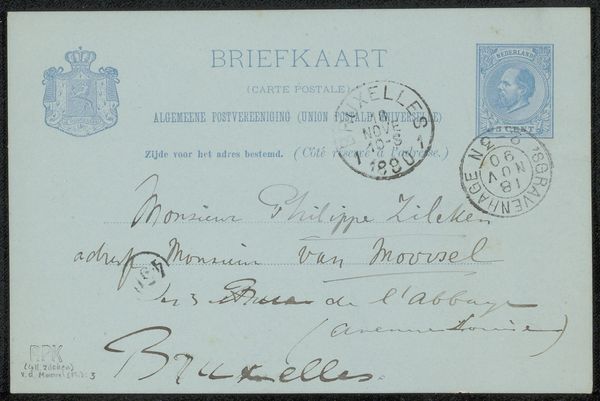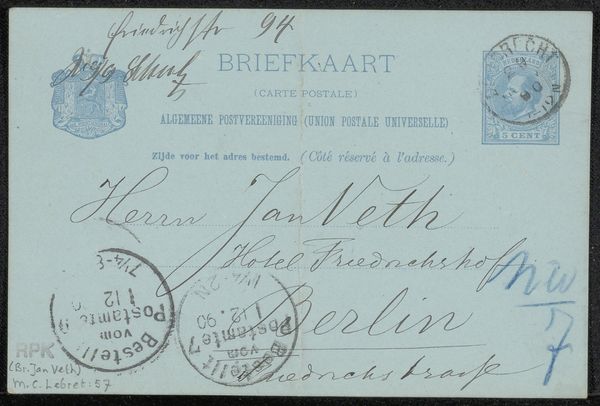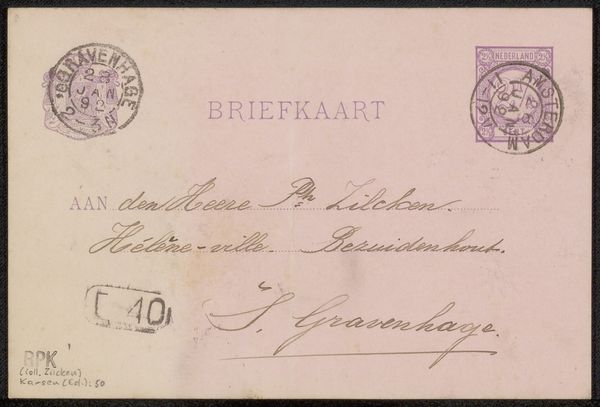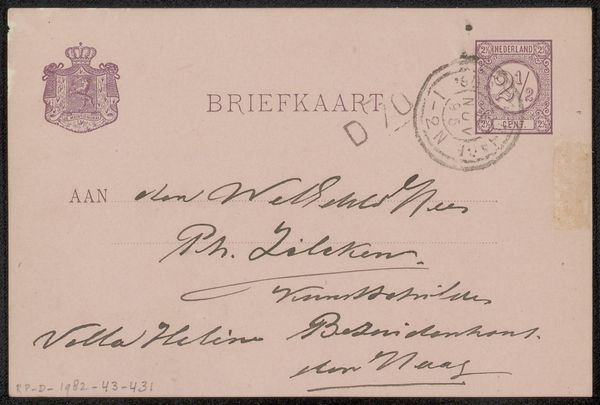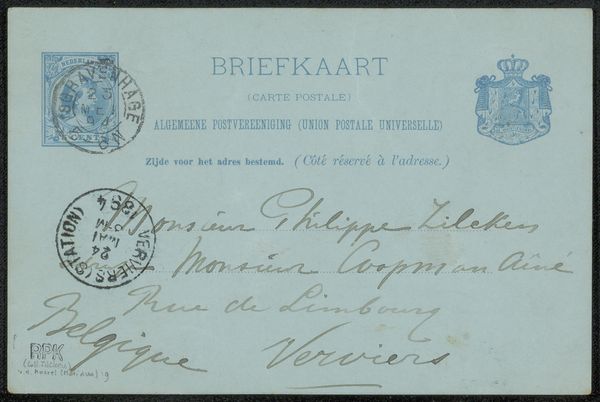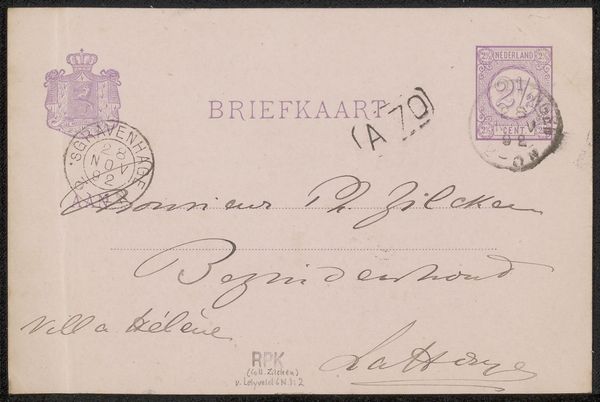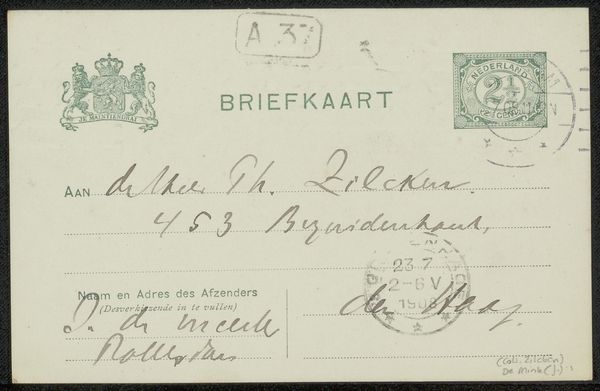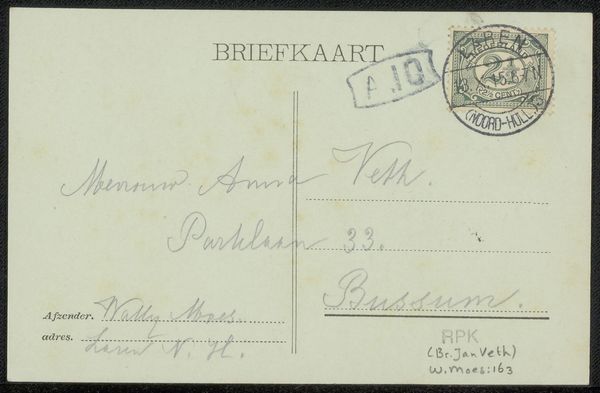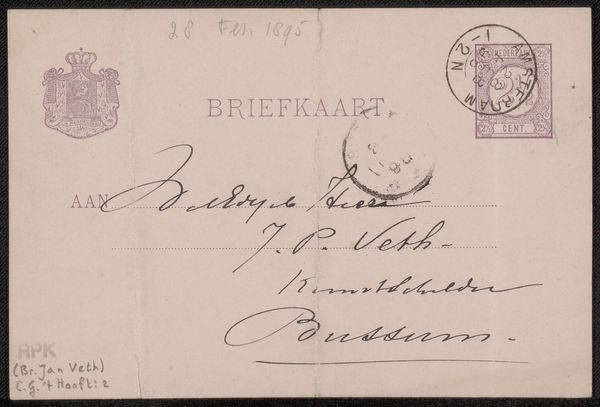
drawing, ink, pen
#
drawing
#
ink
#
pen
#
calligraphy
Copyright: Rijks Museum: Open Domain
Curator: This is a postcard, a “Briefkaart aan Philip Zilcken” created by Marinus van der Maarel sometime before 1895. The media involved are drawing with pen and ink, displaying prominent calligraphy. What's your immediate take on it? Editor: It's fragile and immediate. I’m struck by the contrast between the mass-produced aspects like the printed "BRIEFKAART" and the very personal, gestural quality of the handwritten address and the postmarks. Curator: Indeed. Postcards became incredibly popular during this period as they provided cheap communications, aiding the burgeoning tourist industry but also fostering institutional, bureaucratic exchange, what with the postal union detailed on the card itself. Editor: Right, but I’m focused on how that handwriting implicates the human element and skilled labor. Notice how the flourish of the pen and ink transforms an everyday postal service product into something unique and considered? Curator: It does become an interesting artifact when you consider that postal systems were essential tools for governments to implement state control. This card represents state-sponsored bureaucracy that facilitated societal regulation through standard communications practices. Editor: Standard practices undermined by the intimate, haptic marks of the sender. It's fascinating how these pen strokes carry with them their own history and effort. The card almost reads like an artwork. It’s cheap communication, but the handwriting elevates it. It turns postal bureaucracy on its head, a little! Curator: The stamps and postmarks themselves denote authority, almost a ritualized form of validation from governmental sources and the card’s global networks as well as how these systems shape lives through the seemingly mundane processes of communication. Editor: I see what you mean! For me, this artwork isn’t just about officialdom though. It's a dialogue between standardization and individuality—the intersection of an efficient machine of postal communication and one individual’s human and expressive touch. Curator: Considering that angle highlights the postcard’s importance in the societal and institutional contexts of its time, thanks. Editor: And for me, it helps understand the postcard as more than an everyday artifact – as a tangible embodiment of past human efforts that prompt emotional and personal investment.
Comments
No comments
Be the first to comment and join the conversation on the ultimate creative platform.
